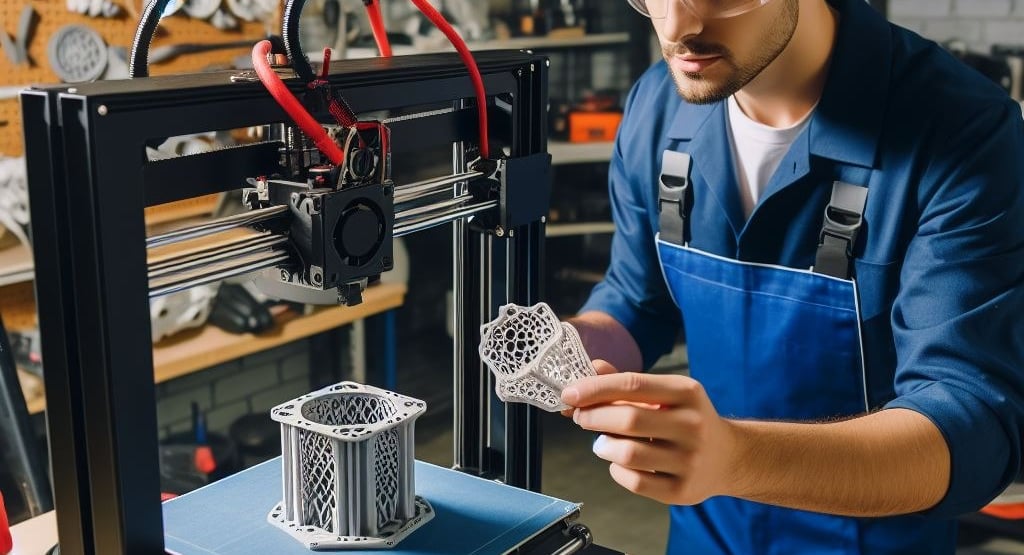The Revolutionary Impact of 3D Printing on Engineering
PRODUCT DEVELOPMENTMANUFACTURINGSTRUCTURAL SIMULATIONDESIGN
5/25/20243 min read


Innovations in Design and Prototyping
The advent of 3D printing has ushered in a new era for design and prototyping in engineering, fundamentally altering traditional practices. Traditionally, the design and prototyping process involved several stages, often including manual drafting, machining, and iterative testing. These steps were not only time-consuming but also incurred significant costs and material waste. The introduction of 3D printing, however, has revolutionized these stages by offering unprecedented speed, efficiency, and flexibility.
With 3D printing, engineers can quickly produce prototypes directly from digital models, significantly shortening development cycles. This rapid prototyping capability allows for swift iterations and refinements, enabling engineers to test and modify designs in real-time. The ability to produce complex geometries that were previously unachievable with traditional methods has opened new horizons in engineering design. Intricate structures such as lattice frameworks and organic shapes can now be realized with ease, fostering innovation and creativity.
Cost efficiency is another critical benefit of 3D printing in design and prototyping. Traditional prototyping methods often involve extensive tooling and material use, leading to high costs. In contrast, 3D printing reduces material wastage by utilizing only the necessary amount of material for each build. This reduction in material use, along with the elimination of costly tooling, translates into significant cost savings.
Industries such as aerospace and automotive have already begun to reap the benefits of 3D printing in design and prototyping. In aerospace, for instance, manufacturers can create lightweight, high-strength components that improve fuel efficiency and performance. The automotive industry has leveraged 3D printing to develop complex parts and assemblies, facilitating advancements in vehicle design and reducing the time to market for new models.
In summary, the transformative impact of 3D printing on design and prototyping is evident across various engineering sectors. By enhancing speed, efficiency, and cost-effectiveness, 3D printing has paved the way for groundbreaking innovations and has redefined the boundaries of what is possible in engineering design.
Advancements in Manufacturing and Construction
3D printing, or additive manufacturing, has significantly transformed the manufacturing and construction sectors, fundamentally reshaping traditional production methods. Unlike conventional subtractive manufacturing, which involves cutting away material, additive manufacturing builds objects layer by layer, allowing for on-demand production, minimal waste, and unparalleled customization. This shift has profound implications for supply chain management and inventory strategies.
In manufacturing, 3D printing enables the production of complex geometries that would be impossible or prohibitively expensive to achieve with traditional methods. By reducing the need for specialized tooling and molds, companies can transition to on-demand manufacturing, producing parts as needed rather than maintaining large inventories. This flexibility not only reduces storage costs but also mitigates the risk of overproduction and obsolescence. Furthermore, the ability to produce parts locally can streamline logistics and reduce lead times, enhancing overall supply chain efficiency.
The construction industry is also experiencing a paradigm shift due to 3D printing. Traditional construction methods are often labor-intensive and time-consuming, but 3D printing technology offers a faster, more cost-effective alternative. By using large-scale 3D printers, construction firms can fabricate complex structures directly on-site, significantly reducing building time and labor costs. Additionally, the precision of 3D printing minimizes material waste, contributing to more sustainable building practices.
Several pioneering projects highlight the potential of 3D printing in construction. For instance, in 2018, Eindhoven University of Technology in the Netherlands commenced the 3D printing of a series of concrete houses, demonstrating the feasibility of creating durable, habitable structures using this technology. Similarly, in Dubai, the Office of the Future was constructed entirely using 3D printing, showcasing the speed and efficiency of this method; the project was completed in just 17 days. These examples illustrate the transformative potential of 3D printing in construction, paving the way for more innovative and sustainable building practices in the future.
As 3D printing technology continues to evolve, its applications in manufacturing and construction are expected to expand, driving further advancements and fostering a new era of efficiency and customization. The integration of 3D printing into these industries represents a significant leap forward, promising enhanced productivity, reduced environmental impact, and a reimagined approach to design and construction.

Gofinite Ventures LLP
LLPIN : AAU-5144
